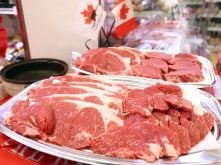HALIFAX – A Dutch dairy lobbyist was in Canada last week, hoping to learn lessons about the supply management system that can be applied to the chaotic situation in Europe.
Sieta van Keimpema, vice-chair of the European Milk Board, told the annual general meeting of Dairy Farmers of Canada July 14 that the European dairy industry has been in chaos for the past two years as farmgate prices plunged and desperate farmers took to the streets.
Several weeks ago, demonstrators were in Brussels, headquarters of the European Commission, throwing boots at commission offices.
Read Also

More factors affecting winter weather
When you combine a weak La Niña, early Siberian snow, and a warm northern Pacific, it’s easy to see why long-range winter forecasting is so complex.
Last year, to get political and media attention, farmers dumped thousands of litres of milk in their fields.
“It’s not what we like to do but dramatic measures were needed,” van Keimpema said.
Now, farmers are proposing a new legal framework that would give producers’ more bargaining power to negotiate prices.
But she said there will be resistance from EC officials who recently produced a report on the dairy crisis that was “vague and without intelligent solutions.”
She was not surprised. They were the same officials who led the liberalization of dairy rules in the EU several years ago.
To break even, European dairy producers require prices of between 40 and 45 euro cents per litre. During the past year of volatile prices in most of the world, they were receiving between 17 and 28 cents, she said.
Meanwhile, processors, including one of Europe’s largest dairy cooperatives, were making record profits.
Van Keimpema complained that EU intervention prices paid to take excess production off the market are lower than production costs.
She was in Canada to learn about the Canadian system and visit farms owned by Dutch immigrants who can describe the benefits of the supply managed system of administered prices, production controls and import controls.
She was accompanied by a Dutch television crew.
“The biggest difference between our system and your supply management program is you,” van Keimpema told DFC delegates.
“You have the tools to negotiate prices and conditions. We hope we can have a better system in a few years and we are learning a lot from
you.”














